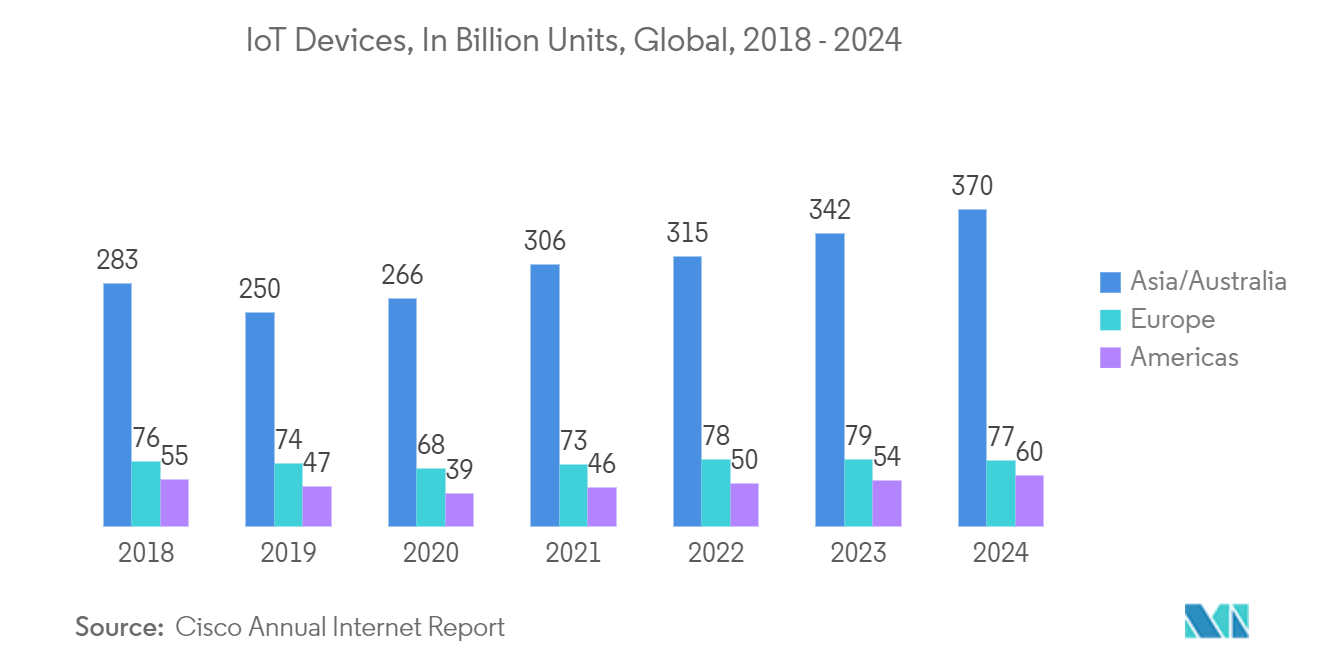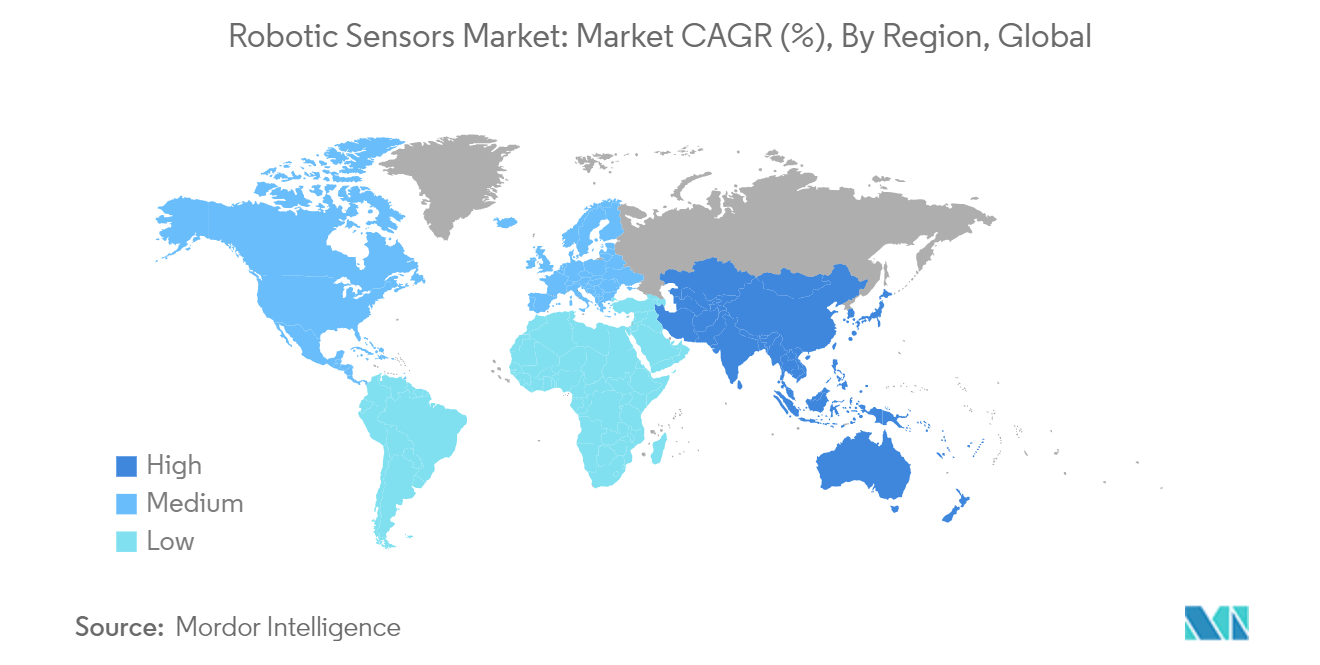Market Trends of Robotic Sensors Industry
Manufacturing to be the Largest End-user Industry
- The emergence of the Industrial Internet of Things and collaborative robots are expected to drive the robotic sensors market. By 2023, IoT devices are expected to make up to 50% (14.7 billion) of all networked devices, up from 33% (6.1 billion) in 2018. Such an increase in IoT devices would drive the growth of the market studied.
- With technical advancements in Industrial IoT, Augmented Reality (AR), cloud computing, and other technologies, global manufacturing organizations have assembled intelligent factories to realize automation, information, and intelligent industrial production. Industrial robots, for example, will play a vital role in this smart manufacturing transformation.
- Moreover, several factory automation and smart manufacturing initiatives devised by numerous countries are expected to offer lucrative opportunities for the growth of the robotic sensors market. For instance, the Chinese government's ambitious 'Made in China 2025' initiative, partially inspired by Germany for Industry 4.0, aims to boost the country's competitiveness in the manufacturing sector.
- The Korean government focuses on smart manufacturing and plans to have 30,000 fully automated manufacturing companies by 2025. The government aims to achieve this by incorporating the latest automation, data exchange, and IoT technologies.
- According to the Japan Robot Association, 2022, the orders for industrial robots from Japanese manufacturers hit a record JPY 955.8 billion (USD 7.35 billion) in 2022, up by 1.6% from the previous year. Strong demand for production line automation due to the shift to electric vehicles and global labor shortage underpinned the growth in orders.
- The rapid and continuous introduction of several new sensor technologies is prominent in developing next-generation industrial robots. New sensor technologies are enabling robots to see and sense their surroundings accurately, perform tasks precisely, and avoid obstacles, including people. Similarly, the integration of unique force and tactile sensors is facilitating robots to have improved touch and feel capabilities that allow them to perform more precise tasks and operate more safely.

Asia Pacific to Dominate the Market
- Asia-Pacific is anticipated to record the highest growth rate during the forecast period, pertaining to the noteworthy installation of industrial robots in several countries, including China, Japan, India, South Korea, and Taiwan. China is dominating the regional adoption rate of sensors for robotic applications due to the massive deployment in the country's dominating automotive and semiconductor manufacturing industries.
- China is a manufacturing leader and has a strong consumer base for electronics and related components, which is a major factor contributing to the robotic sensors market. The country has a significant manufacturing base in automotive, electronics, aerospace and defense, food and beverage, and other industries, which is expected to boost the market's growth further.
- The growing government aid in the improvement of the advanced manufacturing sector is set to positively impact the market's growth. The government of China launched "Made in China 2025", a state-led industrial policy that seeks to make China dominant in global high-tech manufacturing.
- Furthermore, China's Ministry of Industry and Information Technology, the National Development and Reform Commission, the Ministry of Science and Technology, and 12 other agencies released "The 14th Five-Year Development Plan for the Robotics Industry" in December 2021. This is China's second five-year growth plan for the robotics industry, and it serves a critical role in facilitating and encouraging the industry's high-quality development.
- By 2025, the country aims to exceed its average annual growth rate of operating income by 20% in the robotics industry. The five-year plan set out objectives to expand the breadth and depth of robotic applications to continue to increase the number of robots in the country. It also aims to promote a more stable and robust supply chain and to standardize the industry better. As robotics involve various types of sensors in touch, proximity detection, and so on, the sector's growth as a whole is set to boost the market's growth.
- As the automotive, electronics, and manufacturing sectors are also developing at a significant growth rate in other economies such as South Korea, Japan, and India, there is massive potential for growth in this regional market. The regional government is also one of the major factors in the development of sensors in the robotics market.

